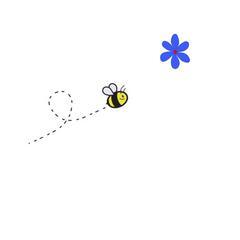


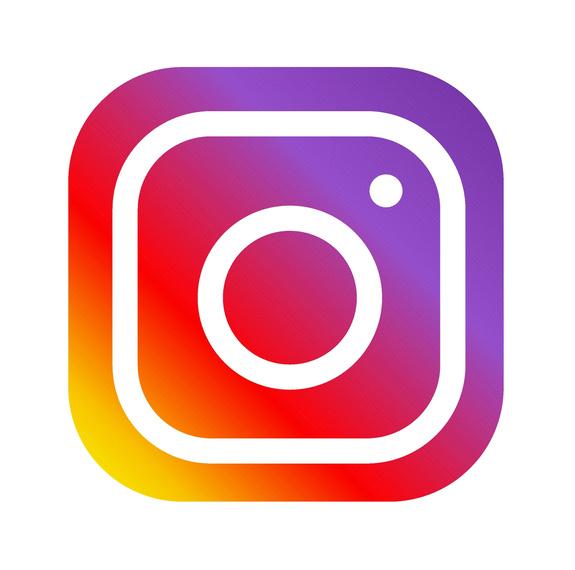





Projects are collaboratively planned forms of assessment for students. They can incorporate many, if not all, 21st Century Skills. They help teams work together, think critically, organize and produce stimulating pieces of work that can be used as models/templates for future projects OR as portfolio pieces.
1. Projects must be planned step-by-step for students, especially for lower-level English learners.
2. The group work and roles must be thought out in advance. Students must be clear on what their roles are and how to work their individual roles as a team.
3. There must be a RUBRIC that reflects the tasks for the project PLUS a RUBRIC for group work that the students receive beforehand.
4. Check-lists help students set the pace and create helpful guidelines.
5. The teacher becomes a facilitator and helps with ideas and guidance.
Collaborative projects are great across subject areas that connect.
fProjectworkcanbea tocusonceaweekand hegoalistohaveit completedbyadeadline given .
Things to think about...
1. Clear task - Students need to be clear on what their task is. Typically, projects are question driven but the main key is that all students understand what the project entails.
2. Pacing- Use a creative process and do the project step-by-step. Be clear on what step you are working on.
3. Brainstorming - A good start always helps. Make sure you spend ample time on brainstorming and on the decision process of what the student's project will focus on. This will help to avoid questions and confusion later down the road.
4. Assign a work buddy - Depending on how your students will work (independently, pairs, teams) a good idea is to organise a buddy system. Even if students are working in teams, they can have a mirror team that they can share ideas, peer review, and have a go-to person before they go to you!
5. Create a schedule with deadlines - There should be a visual calendar with dates and deadlines for students to follow. The schedule should also include what will be covered on what days. Don't forget to include Brainstorming sessions, check-lists, peer-edits, grammar checks, Q&A sessions, and whatever other sessions you think will make the students most productive. Stick to that schedule as best you can but if it's clear the majority won't make it, opt for flexibility.
6. Question in order to guide - Avoid telling students HOW to do improve their project. Guide them by asking questions which will steer them into improvement.
7. Journal/Reflective Questions - Each session should be led OR concluded with a reflection question. Students should keep a journal where they document their steps and thoughts during their project. This can even be through digital videos.
8. Speak English! - For ELL/ESL students, make it clear they are to discuss all aspects of their projects using English.
9. Present! - Students should present their project. Their peers should give written feedback (see template).
10. Self-reflection - What did they discover about themselves? What process worked/didn't work for them?
1. Clear task - Do you understand what you have to do? Can you answer questions about what your task is?
2. Pacing- Please use the step-by-step creative process to work on your project ideas. It will help you stay organised.
3. Brainstorming - A good start always helps. Think about what you want to focus on but first write down as many ideas as you can. This will help you to think about your project idea from many different angles.
4. A work buddy - Your teacher may assign you a partner for your project or you may work on a team. He/she will also assign you and/or your team another partner/team to share ideas and progress with.
5. Stay on schedule - You will have to follow a calendar. Project work involves a lot of thinking time. Stick to your schedule to make sure you have your steps ready when you need to.
6. Question everything - Ask yourself questions to help your project idea to grow. Your teacher and peers (work buddies) will also ask you questions to help you think about your project.
7. Journal/Reflective Questions - Your teacher will give you a reflection question every step of the way. Write down how you feel about that question. You will be happy to have these answers to read after you complete your project.
8. Speak English! - Promise yourself and your teachers that you will speak English to discuss and work on your project ideas.
9. Present! - You will have to present your project to an audience. This will help you to become a better speaker :). Don't worry, be happy! It will be okay!
10. Self-reflection - In the end you will have to think and write about what this project made you feel. What was hard for you? What did you enjoy doing? Self-reflection helps you to better understand how you work.

Like in writing, you can follow steps to help you explore and expand your creative side. The following are 6 stages to guide you to completing your creative work.
1.Preparation- Brainstorm - This is where you collect ideas, think of many ideas (divergent thinking) before you decide on your project idea. Think creatively, what do you want to share and what do you think people will want to see?
2. Incubation- Incubation is where something that is growing is nurtured and supported. This is when you give time for your idea to grow. You can have help from a peer or selfassessment/reflection questions. Plan how you want your project to look and what format you want it to be in.
3. Insight- Use a storyboard! This is where you focus on organizing your work. These are also called 'Aha Moments' or 'Eureka Moments', which is where your realise which direction you want to go. You can use check-lists to help find that direction.
4. Evaluation - This is self-reflection time! What do I like? What do I want to improve? How can I make my piece better?

5. Elaboration - Yay! I like how it looks! Share it! See what other people think! Can I improve my work in any way?
6. Reflection - What did I learn? What did others think of it? This is when you step away from your work and give yourself time to look at it from a new perspective.

Coming up with a good project is not easy. Here are steps that you can use to organise. The following are some things to think about...
1. Brainstorm - Collect ideas, think of many ideas before you decide on your project idea. What is most interesting to focus on?


2. Drafting - Writing a 'rough draft'. This is where you focus on getting your thoughts on paper. What do you want to 'say'?
3.Revising - This is where you focus on organizing your writing. Use check-lists to help your writing have a positive direction and outline. What mistakes can you fix to make your writing easy to read?
4. Editing - Clean up your writing. This is when you focus on grammar, spelling and punctuation. Your classmates/peers can help you with this and offer a 'new eye' on your work. Check-lists are helpful! What advice will help you make your writing better?
5. Publishing - Yay! You are finished. This is when you share your work with others. You can read it aloud, record it, present it...How will you present it?
6. Reflection - What did you learn by writing this piece? What did others think of it? This is when you think about your writing and how your writing was accepted by others. What did you like? What would you change?
Learning Outcome: Ss will use critical thinking skills and the creative process to produce a digital project mini-presentation of their own creative work through a series of workshops, peer/self- assessment, written reflection. Ss experience learning through 21st century skills and strategies.
Your job is to explore your creative side and complete a digital project comparing a topic of your choice with the UK and your country. In every lesson, we will take steps to complete your project with workshops that will help you organise so that it is completed by the end of the course.
Your project will be a presentation with a series of several visuals you choose. These can be images, graphs, infographics or even photos. Your creativity will set the tone :).
Your presentation will explain your project, why you chose to work on it, compare a theme or your choice from the UK with your culture.
By the end of this course, you will learn:
1. The Creative Process and how you can connect it to your project(s).
2. Language and vocabulary connected to your chosen tiopic.
3. How to explore your own creativity in English.
4. The skills you need to confidently present your own ideas/work.
5. The skills needed to offer ideas, give feedback and question a presenter in the correct manner.
6. How to evaluate your own work and evaluate someone else's ideas.
7. Writing and presentation practice.
8. How to reflect on your creative process.
9. How to present and discuss your work.
10. How to organise your creative work in digital format in a portfolio.
As part of your course, everyone in your group MUST prepare a project. Each team must prepare a short presentation. You will work in teams. You should include photos, music and your creative talent to make your presentation as interesting as you can! You and your teacher will decide who you will work with and what deadlines you have to meet.
Task:
Culture, the way of life that characterizes a group of people, plays an important role on who are. Geography is also an important factor in how a society’s culture develops. In this project, student teams will develop a project based on a topic we cover in this course and how it connects with where you come from
Our projects will focus on this question: How can we explore ____________ and how can we compare this topic with the UK and where I live?
You and your team will create a 4-8 minute presentation on your topic following a specific set of rules/guidelines which are outlined below:
Learning Outcome: Ss will use critical thinking and the creative process to produce a digital portfolio of their own creative work through a series of workshops, peer/self- assessment, written reflection. Ss experience learning through 21st century skills and strategies.
Project task: Task Handout. What the project is about and what skills will be learned during process of this project.
Your work must include the following:
Your presentation must have a title and you must clearly explain what your project topic is about, why you chose it and what you will be presenting.
2) Images & Visual Aids
Please include appropriate photos, images, charts and other visual aids that will help us understand your project better.
3) Clear explanations
You and your team will need to clearly explain your presentation points using vocabulary and expressions connected with your topic.
4) A comparison
You (and your team) will be comparing a topic of your choice from our syllabus with the UK and your country/location. Are there any interesting similarities or differences?
5) Some fun information or fun facts
Help us know to learn more about the topic using information that is engaging. Photos…What you liked, didn’t like, comparison images, charts, or whatever else you can think of to make your project as good as it can be...
6) Conclusion – Your group’s own creativity
What can you and your class add to make your presentation more interesting?
Some slide ideas can be found here:
https://docs.google.com/presentation/u/0/?ftv=1&tgif=c
Name (s)/ Group
I/We have thought about this topic and the following ideas I/we have about this topic are...
Brainstorming different ideas or solutions is important in creativity. It helps the artist think of ideas from different angles, or perspectives. This is called DIVERGENT THINKING.
Can you try and explain how you came up with these ideas?
Questions we have are:
I/We have thought about this topic and the following ideas I/we have about this topic are...
I/We want to focus on:
Questions we have about our topic (s)
I/We have thought about this topic and have decided to focus on Topic?
I/We decided on this topic because
CONVERGENT THINKING is when you decide on one solution or idea and decide to focus your project on that idea. The next step is to focus on planning. How will you organise your idea?
Step4
Step 3
Step 2
Step 1
Planning Steps:
Remember, these steps are a guide and you may change things midproject and that is okay. But, keep in mind that there is a DEADLINE and there is a time limit on how much you can get done, so don't change your mind(s) too often.
Name (s)/ Group
There is no such thing as a stupid question. Write down as many questions as you can about your project topic.
Can be answered with a 'yes' or 'no'.
1. 2. Use another sheet of paper if you need to.
Cannot be answered with a 'yes' or 'no'.
Do not stop writing questions. Do not judge, comment or answer the questions.
Write the questions exactly as you think of them.
Closed Questions
Open Questions
Change any statements into questions. Change closed questions into open questions.
Draw a star next to 4 of your favourite questions. Why did you choose these?
Think about why you did this task.
Did you learn anything?
Name (s)/ Group
I/We have thought about this topic and the following is...
What I/We know about the topic...
What I/We want to learn...
What I/We learned...
I/We can learn more about the topic by
Questions I/we still have about the topic
Name (s)/ Group
Choose 3 questions that you think were most important in your last task. Write them down on the left side of this chart.
Where will I find this out?
What do I need/want to know?
How will I find this out?
What sources did you find most useful?
Why did you choose these?
Think about why you did this task. Did you learn anything?
Name (s)/ Group
Use this page to think critically about how you will plan your project. Jot, or write down, some ideas to help you keep focused.
What can I teach about my topic?
Whatquestions willhelpme focus?
What is my plan to keep to the schedule?
IWhatvisualswill incorporate?
Am I reflecting on my progress?
How will I organise my STORYBOARD?
Notes/Extra Comments:
How will I present my project?
Name (s)/ Group
I/We have thought about this topic and the following is...
What needs to be done?
Who will do it? By when?
Decide on what tasks need to be done and in what order. Teams? Decide who will be the best person to do this task. Why?
Questions I/we still have about the topic
Tip: Set a deadline and stick to it!
PREPARED BY:
Project Title:
Project Scope:
TASKSTODO: TASKS COMPLETED: TASKS PENDING:
ANALYSIS / COMMENTS:
VISUAL/DOODLE:
Author's Name: Date:
Title/Description of project:
Create
Note: You can have more slides, but you want to keep your viewer interested. Too many slides, words or images in each slide will distract from your project. Think about what you want in each slide.
Peer/Teacher's Questions/Comments:
What are they?
Learning Contracts (or Learning Agreements) are written agreements between students and teachers that outline what the students will learn, how they will learn it, how long they will have to learn it, and how they will be graded or evaluated.
Thesearetemplatesandyoucanchangetheseideastosuityourclassneeds.
1. Explain. Do discuss this with the group at the beginning and encourage this as a positive way to learn.
2. You can have a general one for the beginning of the year OR do contracts for projects/assignments or throughout the year.
3. Start small. Don't write too many points or students will lose interest.
4. Get parents on board. Depending on the age of your students, a good idea is to get parents to sign too.
5. Get students involved. Why not ask students to help with the creation of a contract?
contracts.
Remembertothink aboutdifferent learningstyleswhen youcreateyour
lNotallstudentswill uikethisideaoreven nderstandtheidea aofalearning greement..
Name: Project title:
Course:
The teacher has explained what the course will be about and I understand what is expected of me. (If not, ask the teacher now!) These are the terms of my learning contract and I will do my best to follow them.
In this project I would like to learn
The reason for this project is to
My role for this project is
If I do not understand something I will
Conduct: I promise
Conflict: If I have a problem with someone I will
Deadlines: I will
Student Signature
Date
A RUBRIC /ru:brIk/ is simple way to set up a grading criteria for assignments. It is a scored list of guidelines of what students need to know in order to have a good idea of what grade they will get on an assignment based on the work they put in.
1. Create criteria connected to the learning outcomes of the task.
2. The scoring guide should be from high to low (it is best to see what the BEST score could be).
3. The scoring guide includes a criterion for every grade.
4. A table is maybe the easiest visual to use.
5. These can be used for self-evaluation & peerevaluation BEFORE the assignment is given to the teacher or AFTER for reflection and discussion.
Whynotcreate therubricwith thestudents?
100%-50% emoticons
Scoringguidecanbe: A5-1 -F
A RUBRIC /ru:brIk/ is simple way to set up a grading criteria for assignments. It is a scored list of guidelines of what students need to know in order to have a good idea of what grade they will get on an assignment based on the work they put in.
1. Create criteria connected to the learning outcomes of the task.
2. The scoring guide should be from high to low (it is best to see what the BEST score could be).
3. The scoring guide includes a criterion for every grade. Write one point for each criterion.
4. A table is maybe the easiest visual to use.
5. These can be used for self-evaluation & peerevaluation BEFORE the assignment is given to the teacher or AFTER for reflection and discussion.
Whynotcreate therubricwith thestudents?
Scoringguidecanbe: A5-1 -F 100%-50% emoticons
This rubric can be used to introduce rubrics to students. Some criteria can be done as a class.
Name Criteria Score
4 3
All parts of the task were completed. Work is excellent. Grammar, spelling and punctuation is excellent. Some work from task is missing. Work is very good but careful details could have made it better. Some mistakes in grammar, spelling and punctuation.
Comments/Reflectionsby writer/peer
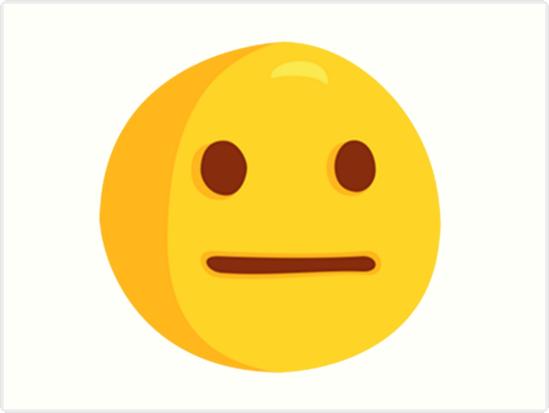
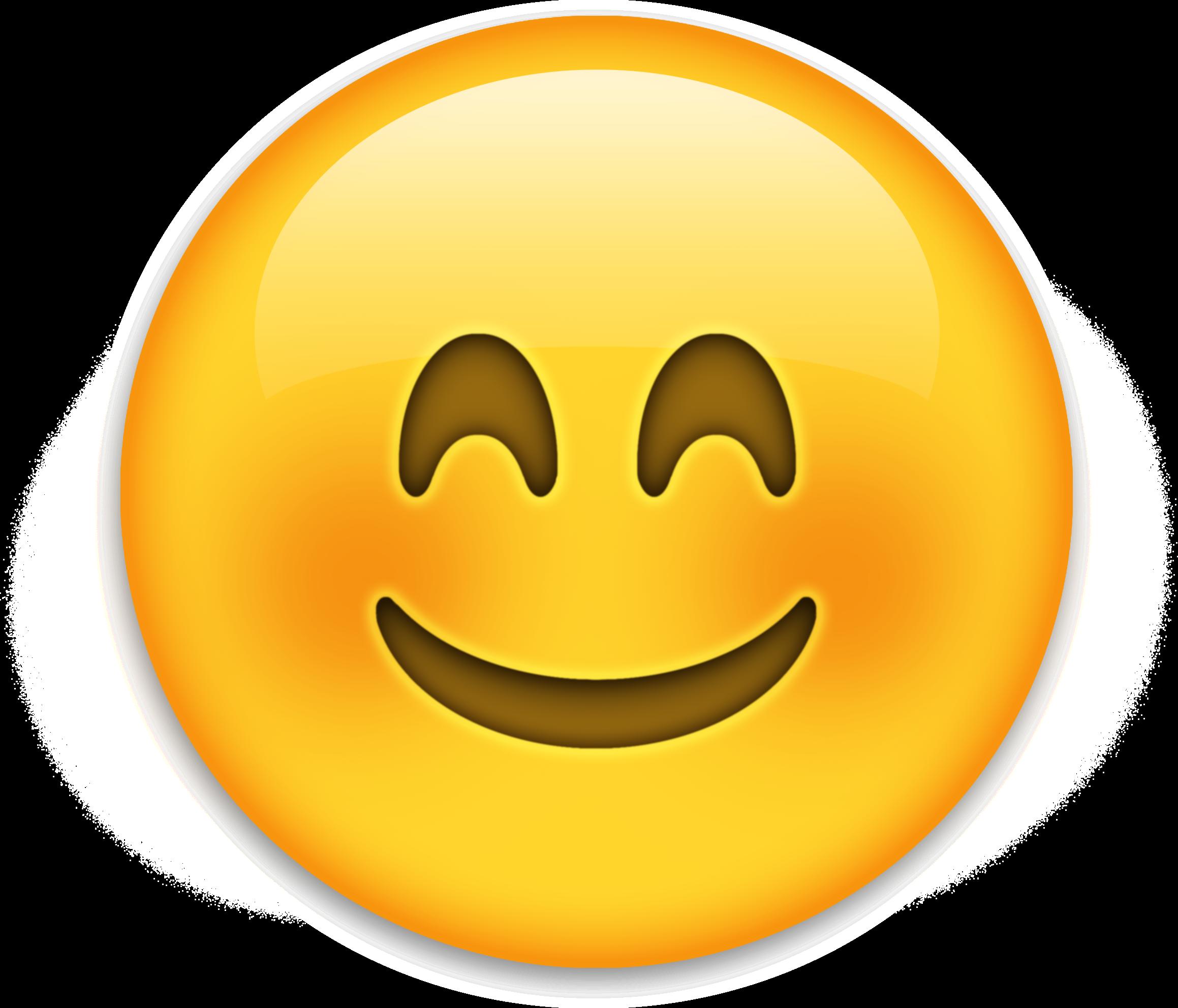
2
2 or more parts of the task are missing. The work has not been checked for grammar, spelling or punctuation.
1
Many, most or all parts of the task are missing. Many errors in grammar, spelling or punctuation.
Teacher Comments
Total score
Name Criteria Score
4 3
All parts of the task were completed. Work is excellent. Grammar, spelling and punctuation is excellent. Some work from task is missing. Work is very good but careful details could have made it better. Some mistakes in grammar, spelling and punctuation.
Comments/Reflectionsby writer/peer


2
2 or more parts of the task are missing. The work has not been checked for grammar, spelling or punctuation.
1
Many, most or all parts of the task are missing. Many errors in grammar, spelling or punctuation.
Teacher Comments
Total score
Name:
4 3 2 1
Focuson Topic (Content)
Criteria Includes essential knowledge abouttopic. Focuseson important concepts.
Coversthe topicindepth withdetailsand examples. Focuseson important conceptsand workis excellent.
Includes essential information butsome keypoints aremissing.
Contentis minimaland missing manykey point.Focus ofworkis unclear.
Effort
Workshowsa greatamount oftimewas spenton researchand development ofideasand keypoints.
Workshows thatagood amountof timewas spenton development ofkeypoints.
Workshows someamount oftimewas spentandis missingkey pointsoftask.
Workshowsa minimal amountof timewas spentandis lacking structureand keypoints.
Originality
Largeamountof thoughtand criticalthinking. Ideasare creativeand inventive.
Someoriginal thoughtand critical thinking.Work showsnew ideasand insight.
Usesother people's ideasand littleevidence oforiginal thoughtand creativity.
Usesother people's ideasvery generally andshows nocreativity and originality.
Appearance Excellent graphics,useof color,andother effectsto enhanceproject.
Grammar& Spelling (Conventions)
Good graphics,use ofcolor,and othereffects toenhance project.
Little/Few graphics,use ofcolor,and othereffects toenhance project.
Nographics, useofcolor, andother effectsto enhance project.
Writermakes noerrorsin grammaror spellingthat distractthe readerfrom thecontent.
Writermakes 1-2errorsin grammaror spellingthat distractthe readerfrom thecontent.
Writer makes3-4 errorsin grammaror spellingthat distractthe readerfrom thecontent.
Writermakes morethan4 errorsin grammaror spellingthat distractthe readerfrom thecontent.

Comments Score

Name (s):
4 3 2 1
Focuson Topic (Content)
Thereisone clear,wellfocusedtopic. Mainidea standsoutand issupportedby detailed information.
Mainideais clearbutthe supporting informationis general.
Mainideais somewhat clearbut thereisa needfor more isupporting nformation.
Themain ideaisnot clear.There isa seemingly random collectionof information.
Supportfor Topic (Content)
Relevant,& qualitydetails givethe reader important information thatgoes beyondthe obviousor predictable.
Group Dynamics Eachstudent knewtheirrole inthegroup andsharedthe responsibility equally.
Respectand Collaboration
Ideaswere sharedbyall membersand eachmember wastreated withrespect.

Supporting detailsand information arerelevant, butonekey issue is unsupported ornot detailed enough.
Theworkwas mostlydone by2/3 memberofthe teamandnot all contributed.
Ideaswere sharedby2/3 membersand eachmember wastreated withrespect mostofthe time.
Supporting detailsand information arerelevant, butseveral keyissuesor portionsare unsupported.
Supporting detailsand information aremissing, unclearornot relatedtothe topic.
Theworkwas mainlydone byoneortwo students.This affectedthe overall project.
Someofthe projectnot completed duetolack of cooperation ingroup.
Ideaswere madeby1 or2and respect wasnot always evident.
Verylittle cooperation seenanda clearlackof respect notedin groupwork.
Grammar& Spelling (Conventions)
Noerrorsin grammaror spellingthat distractthe readerfrom thecontent.
1-2errorsin grammaror spellingthat distractthe readerfrom thecontent.
3-4errorsin grammaror spellingthat distractthe readerfrom thecontent.
Morethan4 errorsin grammaror spellingthat distractthe readerfrom thecontent
Comments Score

1. Check-lists are clear lists/questions that help guide students in their assignment process.
2. These can be done independently, with one peer, or in a group.
3. Ideally, the assignment should be checked by all of the above BEFORE it comes to the teacher.
4. Why not involve students in the check-list process?
5. Check-lists are based on the task and rubric criteria, but can also be simply about checking grammar and spelling.
How do I know if I am doing a good job before I hand it in to you?
Well,IgaveyoutheTASK andwediscussedthisasagroup.YoutalkedabouttheaRUBRICwithyourteam ndtheCHECK-LIST.Goythroughallofthisandask wourteamtocheck-your ork.Iamheretohelp!
Author's Name
Date
Title/Description of written piece:
I am drafting my presentation and I have included:
An interesting introduction and quick summary of what I am presenting
My own opinion about the topic and connections that I can make with my own experience or another text are included
I have created a script or outline to help me when I present
Images and text relevant to the topic
My style - My work comes from the heart and mind
Something that I really like about my piece is
Something that I think I can improve is
Space for questions or comments
1. Is my introduction interesting and engaging?
2.Do I explain what my project is and why I chose it?
3. Do I give some background to my project idea?
4. Is my work organised so people will be able to follow it?
5. Do I include visuals to help people understand what I worked on?
6. Do I include enough details and information to explain my work?
7. Did I take out any information that is not needed?
8. Did I stick to the topic?
9. Have I given my personal reflection on my work?
10. Did I explain terminology or words the reader may not understand?
11. Am I satisfied with the way I end my presentation?
Other: Comments:
Author's Name
Date
Title/Description of written piece:
I I have finished my written draft and have checked that I included: An interesting introduction that includes what I will be writing about
My own opinion about the topic and connections that I can make with my own experience or another text
Spelling &
Grammar - Verb tense has been checked
Style - My writing comes from the heart and mind
Something that I really like about my presentation is
Something that I think I can improve is
Space for questions or comments
Does your introduction grab participants' attention and explain your objectives?
Are the points of the presentation clearly defined?
Are the main points in logical sequence?
Do these flow well?
Do the main points need support from visual aids?
Does the closing summarize the presentation clearly and concisely?
Is the conclusion strong?
Have your tied the conclusion to the introduction?
Are the visual aids easy to read and easy to understand?
Are they tied into the points you are trying to communicate?
Comments:
Name & Date
1.
Did I speak too slowly, too quickly or just right? ______________________________________________
2. Was the tone of my voice too high, too low, or just right? ______________________________________________
3. Did I speak loudly enough for an audience to hear me?
4. Did I produce the correct intonation patterns in sentences?
5. Did I have a good opening?
6. Did I look at my audience?
7. Did I speak with feeling?
8. Did I support my ideas with details and examples?
9. Did I tell the audience how I feel about the topic?
10. Did I use interesting, specific vocabulary?
11. Are my visuals interesting and do they help the presentation?
_______________________________________________________ 1. ________________________________________________________ 2.
_______________________________________________________
Does the introduction grab your attention and explain the presenter's objectives?
Do you know what the main points are of this presentation?
Are these main points in logical sequence?
Do the main points need support from visual aids?
Does the closing summarize the presentation clearly and concisely?
Is the conclusion strong?
Visual Aids
Are the visual aids easy to read and easy to understand?
Are they connected to the points the presenter is trying to communicate?
Something that I really like is:
Something that I think can be improved is:
One question I have is:
I liked because
1. _______________________________________________
2. I want to know more about ____________________ _______________________________________________
3. I thought the the opening was interesting comment:
4. The speaker stayed on the topic?
5. I did not understand __________________________ _______________________________________________
6. I wanted the presenter to clarify/explain _______________________________________________ _______________________________________________
7. What I enjoyed in this presentation is __________
8. One question I still have is _____________________ _______________________________________________
9. One thing I think could have been better was
10. My own comments:
Punctuation
I read my piece aloud to see where to stop or pause for periods, question marks, and commas.
Quotation marks and citations are included where they are needed.
Capital Letters
I checked for capitals at the beginning of sentences and other words that need capitals like cities, countries, and other proper nouns.
Grammar
My sentences have been checked for subject/ verb agreement and proper verb tenses.
I have checked for sentences that are too long and run-on.
Spelling
Language
I checked all of my spelling and fixed the words that were wrong.
I have looked at the chosen vocabulary and corrected what was wrong.
I have looked over the transition words that they help my writing flow.
I have looked up phrasal verbs that I was not sure about.
Style
I am confident that my writing flows nicely and will interest the reader.
I had some trouble with:
Comments:
Name & Date
1. Important words in the title are capitalized.
2. New paragraphs are indented.
3. Each sentence has a subject and predicate.
4. Words are not repeated again and again.
5. Relative pronouns (who, where, when, which, that) have been checked and used correctly.
6. Transition words are correct (although, because, since, as a result...).
7. Sequence is clear. Ordinal numbers are spelled correctly.
8. Overuse of words are avoided.
9. Unnecessary words, phrases, and sentences are omitted.
10. Spelling has been checked.
11. Verb tense has been checked.
12. The writing flows and the main point is understood by the reader.
Name
Author's Name
Date
I have carefully read my peer's work and checked the following:
Extra comment for each.
Visual appeal
Grammar
Spelling
Language
Style
Other
Something that I really liked about the project and style is
Something that I think the presenter should think about is
Space for questions or comments
I read my partner's piece to see where to stop or pause for periods, question marks, and commas.
Quotation marks and citations are included where they are needed.
I checked for capitals at the beginning of sentences and other words that need capitals like cities, countries, and other proper nouns.
My partner's sentences have been checked for subject/ verb agreement and proper verb tenses.
I have checked for sentences that are too long and run-on.
I checked all of the spelling and wrote the words that were wrong on post-its.
I have looked at the vocabulary in the writing and made comments.
I have read the transition words and made comments where I was not sure.
I have made comments about the phrasal verbs I was not clear about.
The writing was clear and it flowed nicely. I made comments where I was unclear.
I had some trouble with:
Comments:
Name: Project (optional):
In my personal opinion
Be honest with yourself and answer the evaluation criteria. Not really
Definitely
Most of the time
I did the best work that I could
I followed the check-lists and steps for my project
I came prepared to lessons and workshops
I thought about the comments of my peers thought about my work and changed it when needed
I am proud of the final product and presentation that I prepared
I feel that best part of my project is
Some thing I think I could have improved on is
Name: Project (optional):
Be honest with yourself
Contributed good ideas that I really thought about Not
Compromised and cooperated with the group
Came prepared to meetings
Communicated effectively with my team
Took initiative when I felt it was needed
Did my share of the work and did my role as best I could
I feel that greatest strength as a team member is/are
In the table below, choose a major strength of your group members in connection to your group's goals and processes. Provide one specific example to support your answer. Don't forget to include yourself :)!
Group member's name and role in the group
Something we do well as a group is
Something we can improve on as a group is
The direction we plan to take next is
I am confident that:
Language
I can write about a past event
I can write about a future plan
I can compare 2 things
I can describe what I like and dislike
Grammar
I had some trouble with:
I can write about how often and how I do/did something
6. I can use the past simple tense and irregular past verbs
7. I can use 'going to' for future
8. I can use like and love + 'ing' or 'to'
9. I can write about how often I do something
10. I can compare using adjectives
11. I can use the linking word 'but'
Communication
12. I can understand what the task is
13. I can write short and simple texts
14. I can understand short reports and instructions
15. I can write short notes/emails asking for information
16. I can write short notes/emails answering questions
I am confident that my writing flows nicely and all parts of the task have been completed so that the reader understands my message.
Comments:
I am confident that:
Language
5.
I had some trouble with:
I can express my opinions and request opinions
I can express my intention and purpose
I can express obligation and necessity
I can express certainty and uncertainty
I can describe past actions over a period of time
Grammar Communication
6. I use zero and first conditionals using if and when
7. I use the present continuous for future use
8. I use past continuous tense
9. I can use modals connected with obligation & necessity
10. I can use modals connected with certainty and uncertainty
11. I can use infinitives of purpose
12. I understand the task and what I have to do
13. I can use the grammar and language connected to the task
14. My writing is well-organised, using linking words and cohesive devices
15. I can use phrases and expressions connected with the task
16. I can use a range of grammar connected with the task
17. I can summarise, report and give my opinion about facts and information
I am confident that my writing flows nicely and all parts of the task have been completed so that the reader understands my message.
Comments:
I am confident that:
Language
I can express ideas coherently
I can express my intention and purpose
I can paraphrase, evaluate and hypothesise
I had some trouble with:
I can evaluate past actions or a course of events
5.
I can write clear, detailed texts on a range of subjects
Grammar
6. I can use all conditionals correctly
7. I can use correct verb patterns
8. I can use more complex forms of the passive
9. I can use modals correctly
10. I can use modals + perfect infinitive
11. I can use correct verb patterns after wish and hope
Communication
12. I understand the task and what I have to do
13. I can use the grammar and language connected to the task
14. My writing is well-organised, using linking words and cohesive devices
15. I can use phrases and expressions to communicate straightforward ideas
16. I can use a range of grammar connected with the task
I am confident that my writing flows nicely and all parts of the task have been completed so that the reader understands my message.
Comments:
I am confident that:
Language
I had some trouble with:
I can justify an argument/opinion and challenge them
I can express caution, empathy, sympathy, and support my reasons I can evaluate different standpoints and express reservations
I can write clear, detailed texts on a variety of subjects
I can write evaluations and arguments using information given
Grammar
6. I can use a broad range of complex structures flexibly and effectively
7. I have a high degree of grammatical accuracy
8. My writing has few, if any errors
9. I can use the conventions of grammar with a high level of flexibility and sophistication
Communication
10. I can fulfill all communicative purposes of the task
11. My text is well-organised and coherent, using a variety of devices and organisational patterns with flexibility
12. My writing is well-organised, using linking words and cohesive devices
13. I can use a wide range of vocabulary including idioms and phrases connected with the task
I am confident that my writing is clear and well-structured, expanding on relevant points with supporting details that use complex writing structures.
Comments:
In the table below, choose a weakness of your group members in connection to your group's goals and processes. Provide one specific example to support your answer. Don't forget to include yourself :). Do not be mean!
Group member's name and role in the group
Something we can improve on as a group is
Some questions we have are
The direction we plan to take next is
Name:
Write the name of each of your group members in a separate column For each person, give a rating for each member based on the criteria in the first column. The rating scale is 1-4 (1-strongly disagree, 2- disagree, 3 - agree, 4- strongly agree. Be honest.
criteria
Attends group meetings regularly and on time.
Contributes critical ideas to the group discussions.
Completes group tasks on time.
Prepares work in a quality manner.
Shows cooperation and team work.
Wants the project to be completed successfully.
Based on these totals, I think
The direction I would like the group to take next is
Group member Evaluation Group member Group member Group memberDate:
Be honest with yourself. Now is the time to think about your project and your presentation.
Think about all the many parts of your presentation like how you engaged your audience, your voice, organization, visuals for presenting, how you presented, your body language, your sequencing, how you ended the presentation and whatever else you can was included in the rubric.
What are my general thoughts on how the presentation went?
What was the most challenging part of this project?
Two things I think could have been better were:
Three words to describe my presentation are:
What did I learn from this experience?
These questions and phrases will help you practise speaking!
Howdoyou pronounce it?
Can I sit here?
May I work with you?
Sorry, I'm late.
Canyou pleasehelp me?
Whatpage areweon?
Whatshould webedoing now?
Can you explain it again, please?
tMayIleave heroom?
Couldyou pleaserepeat that?
Whatshould wedonext?
Notes/Comments:
Whereis...? Whatis...?




Howdoyou spellit, please?
Sorry,I missedthe lesson
Howdoyou say-----in English?
Sorry,Idon't havethe homework/ answer
tMayIgoto hetoilet?
Whatshould webedoing now?
wWhattimedo ehaveto...?
I am both a professional educator and a professional learner. My experience in Learning & Development spans across continents, content and fields
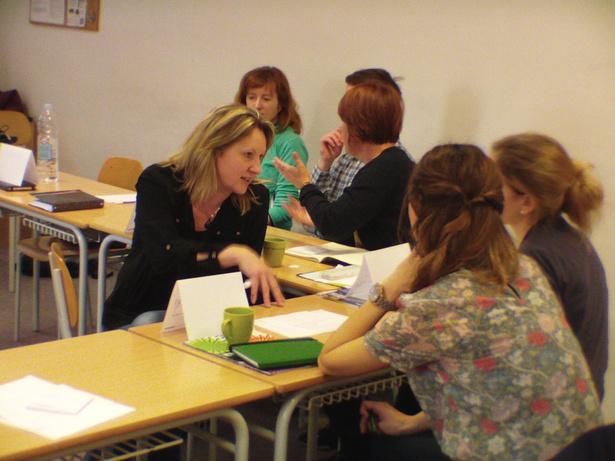

I have over 20 years ’ experience in EFL teaching, curriculum design and Academic Management in the United States, Czech Republic, the UK and Italy I hold a Bachelor’s degree in English and Secondary Education, as well as, a Master’s degree in English from Queens College, City University of New York (CUNY). I also did some PhD studies at Masaryk University in Brno, Czech Republic.
 Catherine Stepan Creative Director & Owner
Catherine Stepan Creative Director & Owner

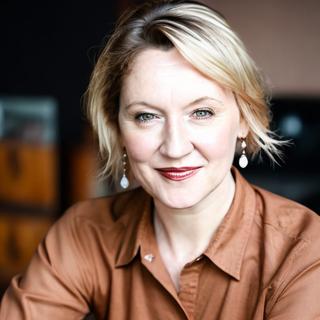
Like and follow us on:
@ajastudent
https://www.linkedin.com/company/aja-student
https://www.teacherspayteachers.com/Store/Aja-Student
